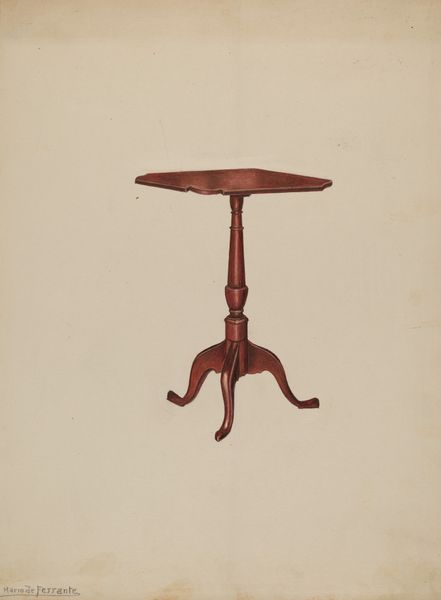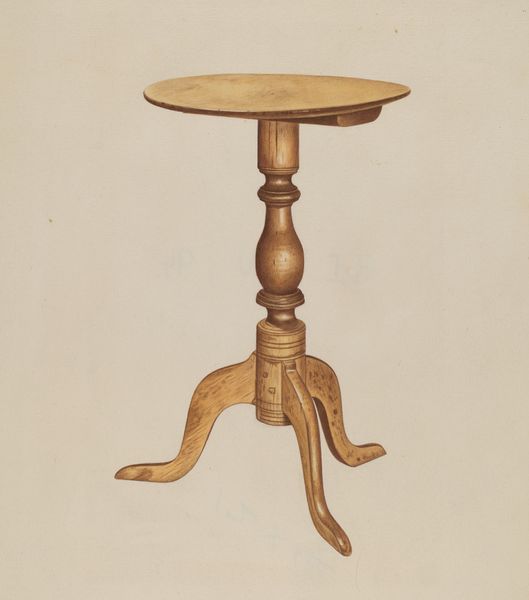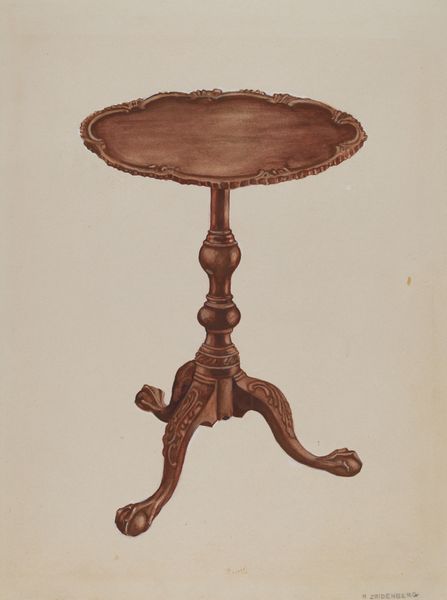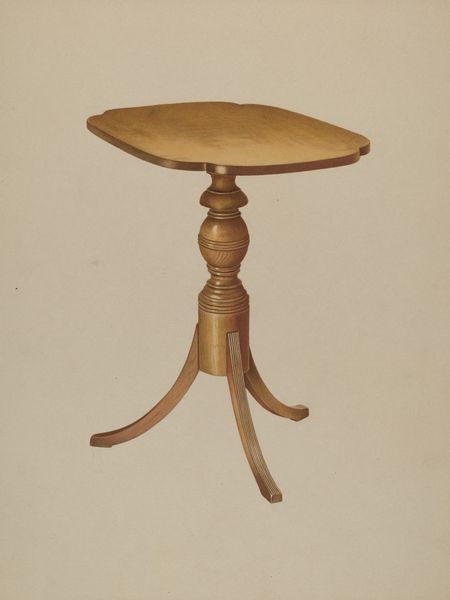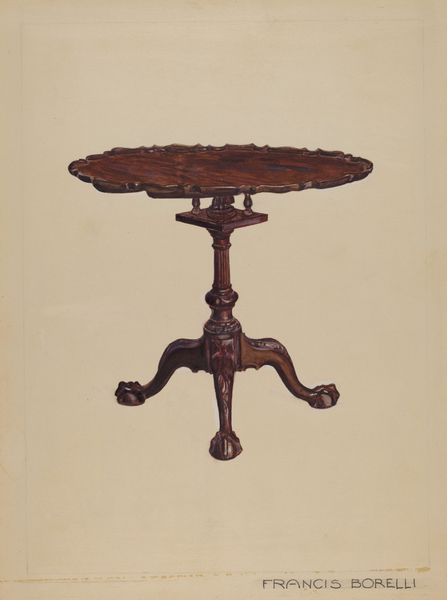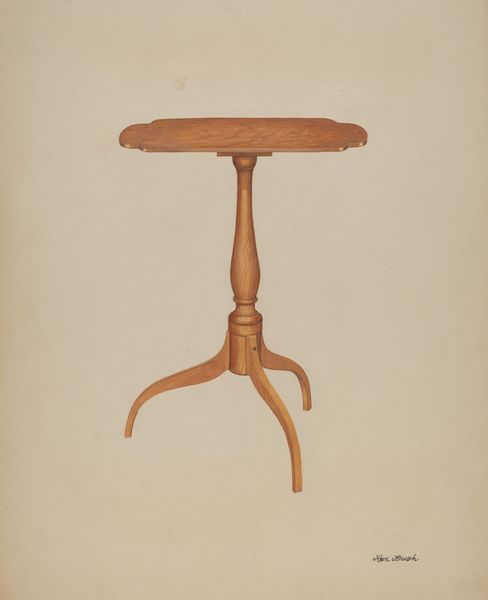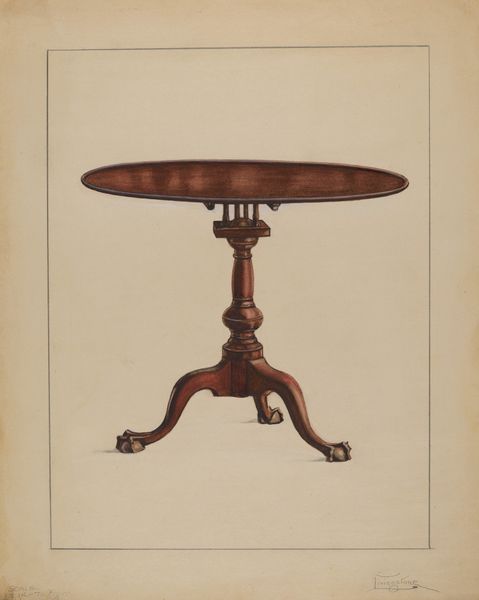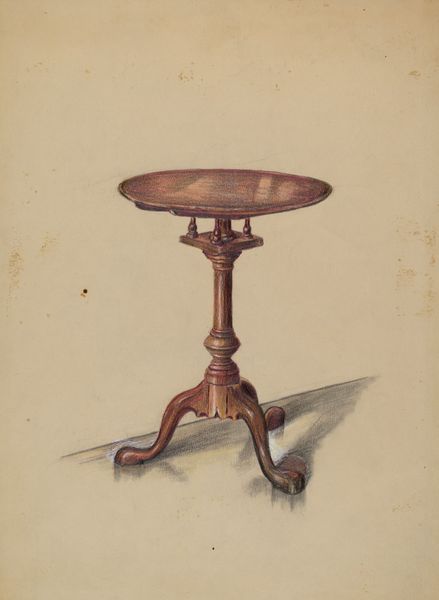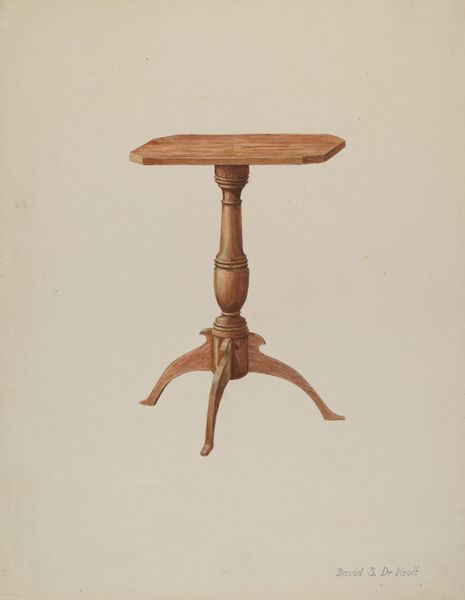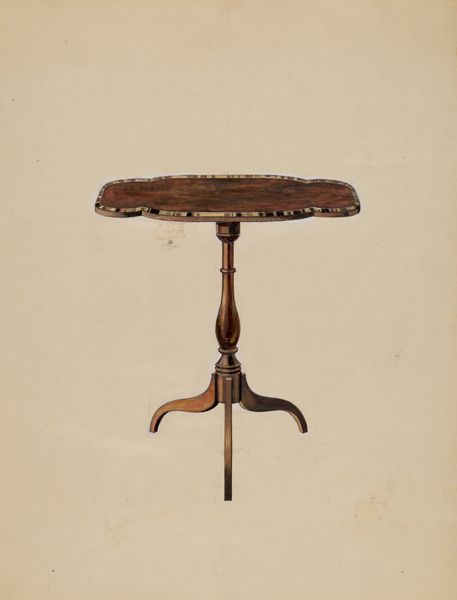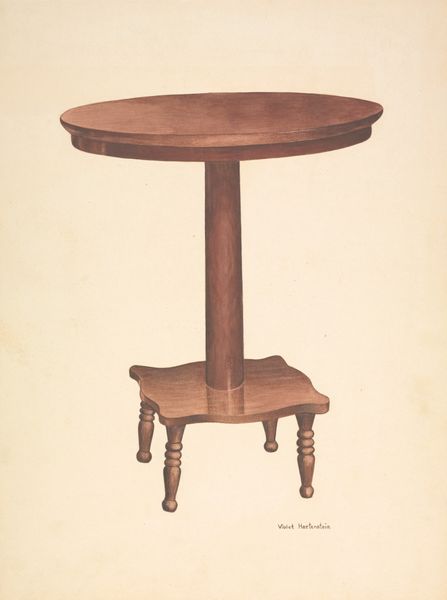
drawing, watercolor
#
drawing
#
caricature
#
watercolor
#
decorative-art
#
watercolor
Dimensions: overall: 29 x 22.4 cm (11 7/16 x 8 13/16 in.) Original IAD Object: 28"high; 32"diameter.
Copyright: National Gallery of Art: CC0 1.0
Curator: Today we’re examining Frank Wenger's "Table," a watercolor and drawing from around 1937. Its crimson tones are immediately striking. Editor: The most potent symbolic element for me is the table's claw feet. The inclusion of such zoomorphic symbolism taps into a rich tradition of attributing animal traits—like power or aggression—to inanimate objects. What's your immediate reading of this work? Curator: Initially, I'm drawn to the composition itself: the subtle variations in hue, from a deep mahogany to a softer, almost pinkish tone on the tabletop edge, add depth and contrast. The play of light across the various surfaces suggests a focus on form over functionality. Editor: But what about the intention? One may interpret this image as more than a piece of furniture; its strong, assertive feet might signify dominance, rootedness, or even territorial claims. I believe there are numerous iconographic significations. The fluted column suggests power as well. Curator: Certainly. But considering the principles of design – the way the verticality of the pedestal supports the horizontality of the tabletop. And I cannot avoid noticing the lines, colors, shapes, textures, space, and values themselves; there’s also the overall unity and balance it achieves. Editor: True. However, focusing solely on formal aesthetics ignores the cultural messages imbued within. Furniture, since ancient Egypt, carries weight beyond utility. Tables in particular, where family and commerce congregate, become charged spaces. Wenger has magnified the traditional image with aggressive feet. Curator: It strikes me that Wenger’s choice of medium - the delicate control of watercolor - creates a fascinating tension against the robust forms he depicts. This tension enlivens the image with complexity. Editor: Ultimately, it demonstrates that an artwork of an ostensibly mundane object may yet be replete with symbolic value and insight regarding human culture. Curator: It proves that meticulous attention to compositional elements creates resonance.
Comments
No comments
Be the first to comment and join the conversation on the ultimate creative platform.


